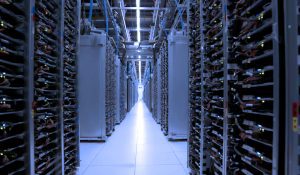Data center physical infrastructure (DCPI) long has been the foundation of an enterprise’s IT business operations and until recently its business value was based almost exclusively on availability (or uptime) and upfront cost.
Uptime, of course, is critical not just to the DCPI system, but for all the processes that allow an enterprise to do business, whether they’re enabling sales or other important operational functions. Upfront costs, meanwhile, are a shorter-term consideration that nonetheless can drive major purchasing decisions. Keeping down DCPI upfront costs leads to a better return on investment.
However, the modern IT environment – in which rapid change is the norm and flexibility the goal – has created a need for other ways of measuring DCPI business value. Here at APC by Schneider Electric, we’ve identified two new criteria need to be considered when assessing the business value of DCPI.
One is whether the DCPI is flexible or agile enough to react to opportunities, fluctuating market conditions or environmental changes.
The other criterion that must be considered when gauging the business value of DCPI – and one that is much more accurate and multidimensional than upfront costs – is total cost of ownership (TCO).
Indeed, upfront cost is but a fraction of the TCO of any DCPI, which incur ongoing costs from capital expenditures in the form of power usage, maintenance and repair expenses.
Further, while availability remains one of the key criteria for measuring the business value of DCPI, the definition of the term needs to be broadened beyond whether DCPI equipment is reliable.
Here’s one big reason why: Human error is responsible for 40% to 60% of unplanned downtime. That can and should be factored into the business value of DCPI, even though they aren’t failures of purchased equipment.
By including human error in the DCPI business-value equation, you get a truer picture of TCO. The issue causing all those errors might be that vendor products are too complex and poorly designed. The costs of those flaws aren’t reflected in a bill of sale, but they are all too real to the enterprise.
Agility or flexibility is a measurement of an enterprise’s ability to adapt to change, whether the change comes in the form of a systems installation, a need to scale the operation, or a reconfiguration designed to accommodate changing business needs.
Two things to keep in mind about TCO:
1) The primary contributor to exorbitant TCO is oversizing. Overbuilding the data center can result in unnecessary energy costs, capital costs and operating costs.
2) Power equipment and electricity account for more than half of TCO, making it a more realistic and useful metric than upfront costs.
Obviously, oversizing contributes to the high costs of power equipment and energy. One way to avoid oversizing-related costs is to implement a scalable DCPI solution.
Scalability ensures that the infrastructure can meet the needs of the data center whenever required. Scalability also is a tool for achieving agility and flexibility. The ability to scale allows DCPIs to respond to changing business demands and unexpected opportunities.
Learn more about the issue in our white paper, Data Center Physical Infrastructure: Optimizing Business Value.



